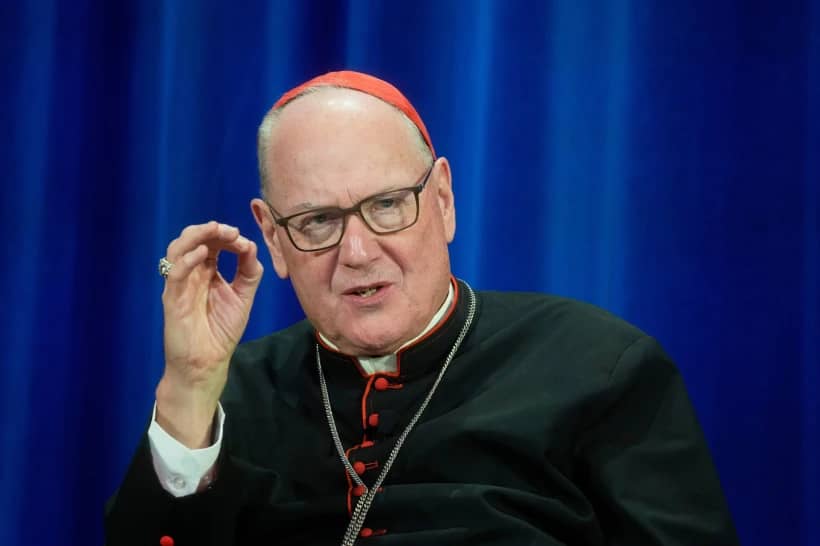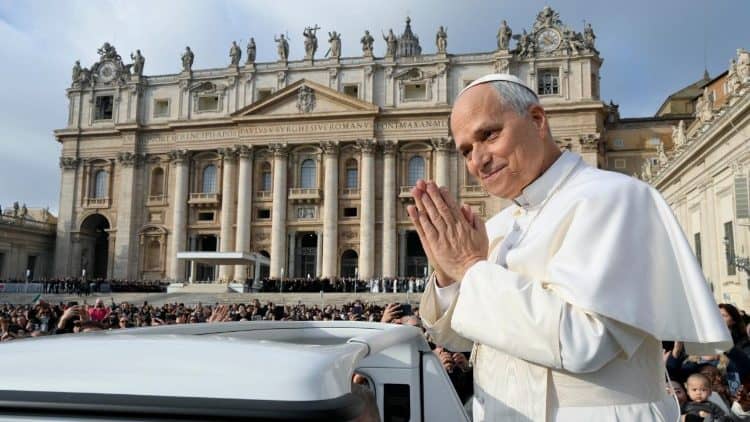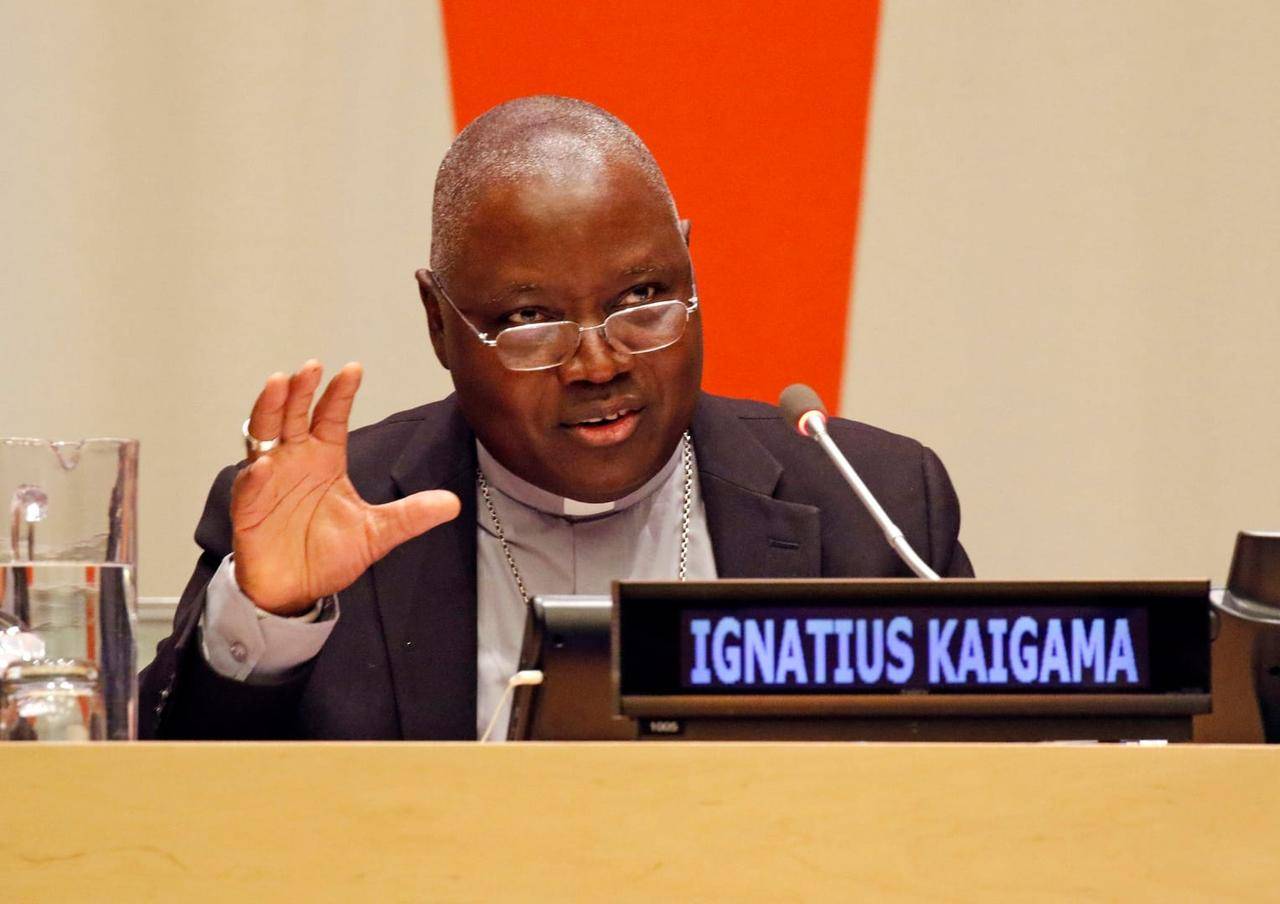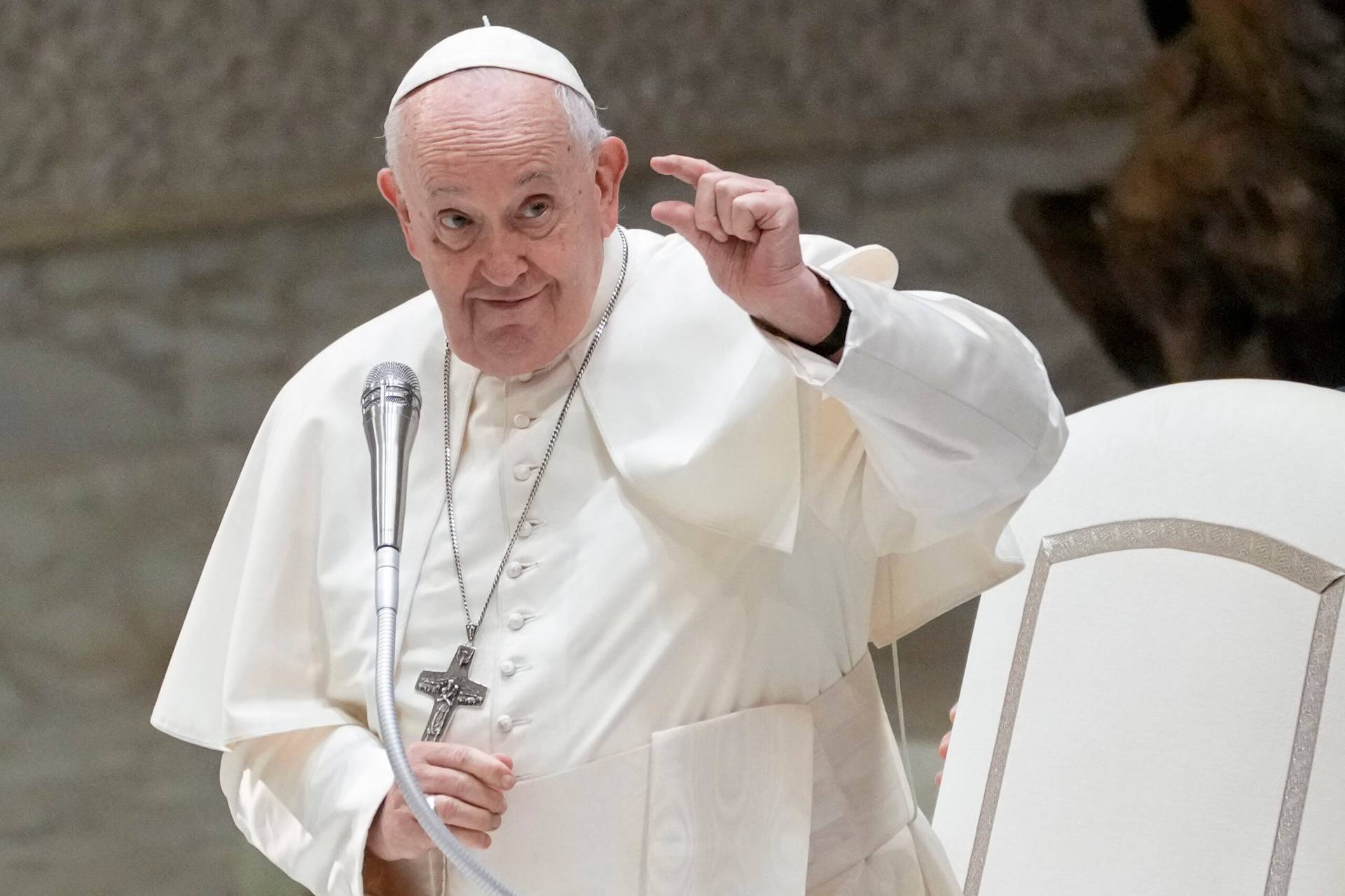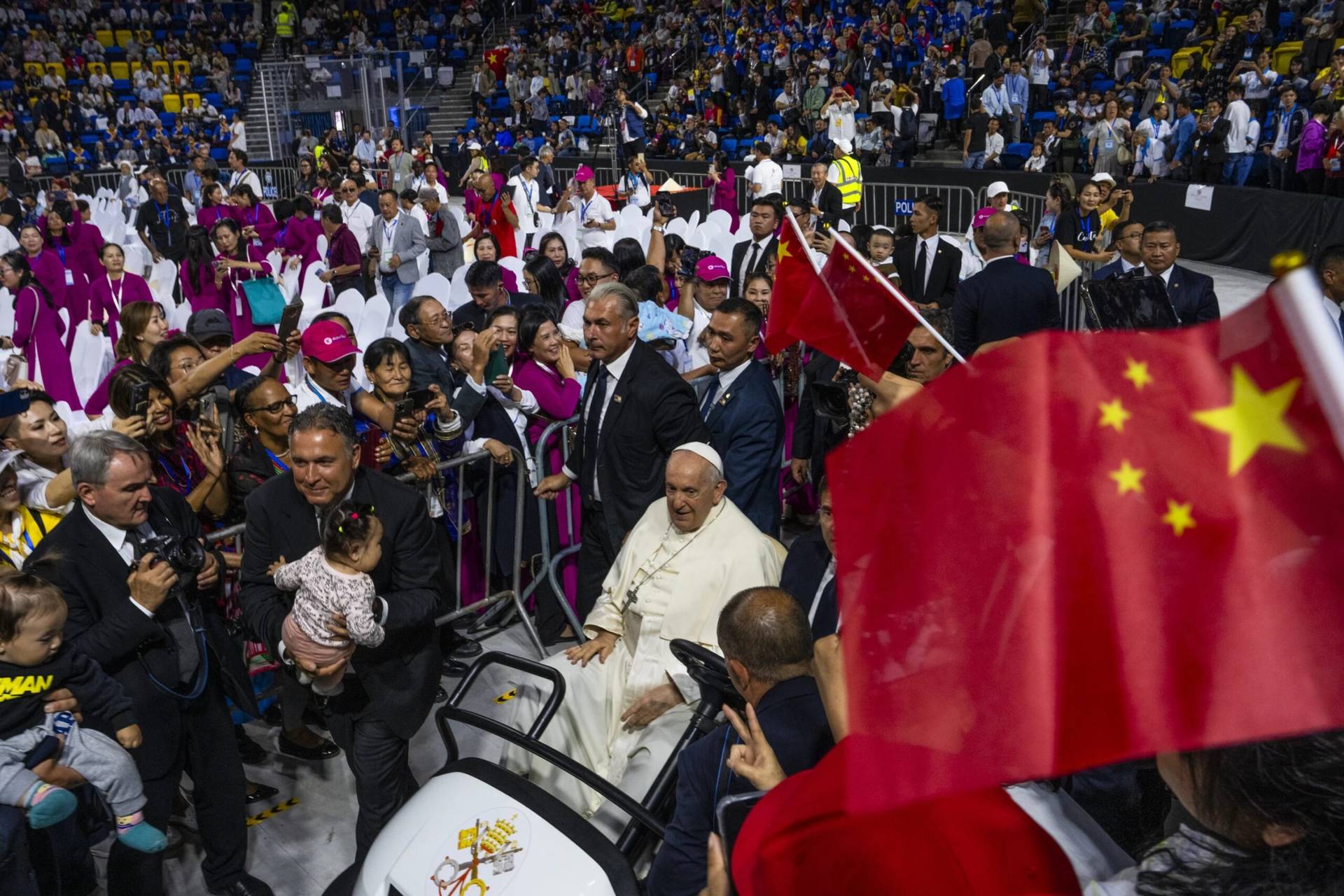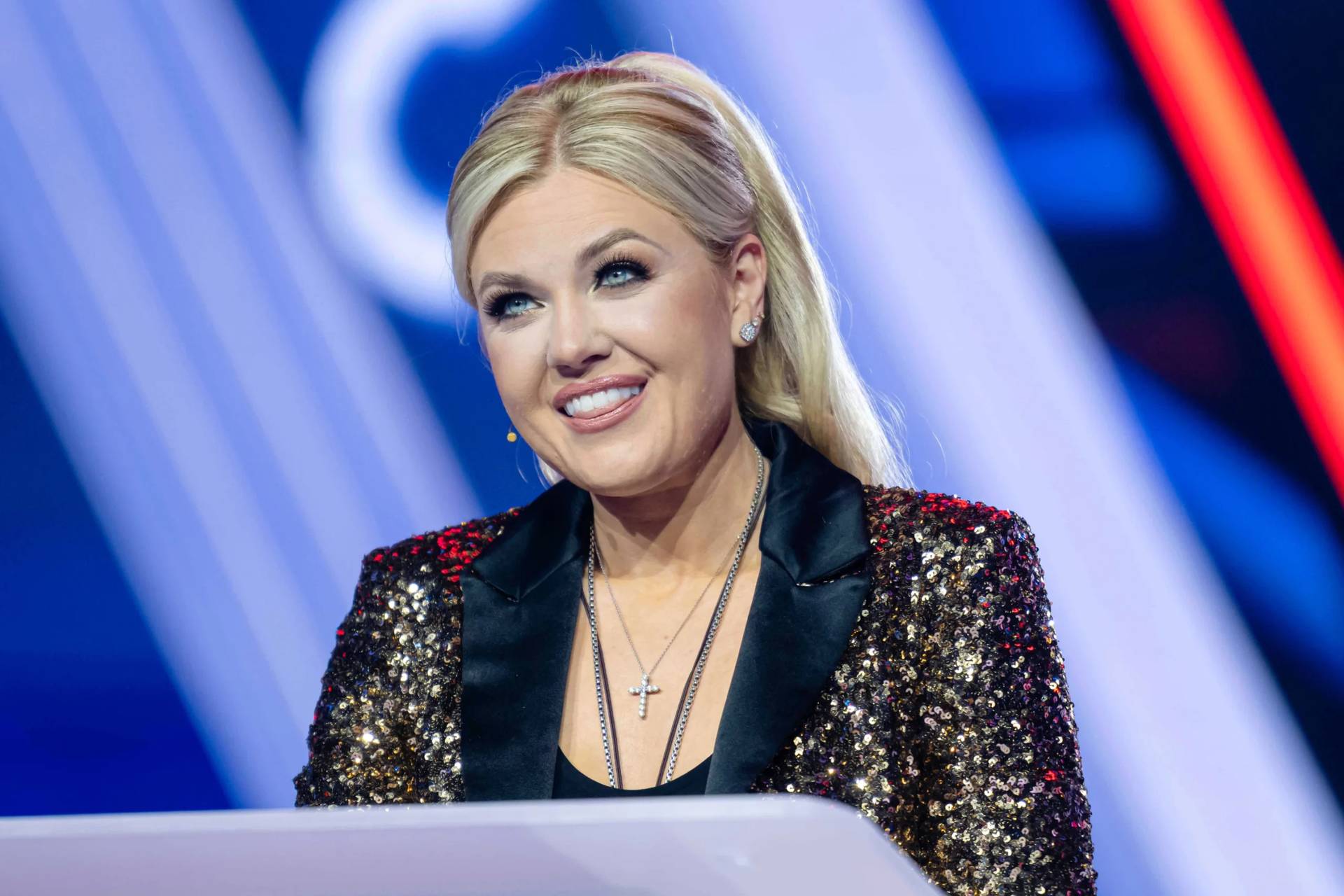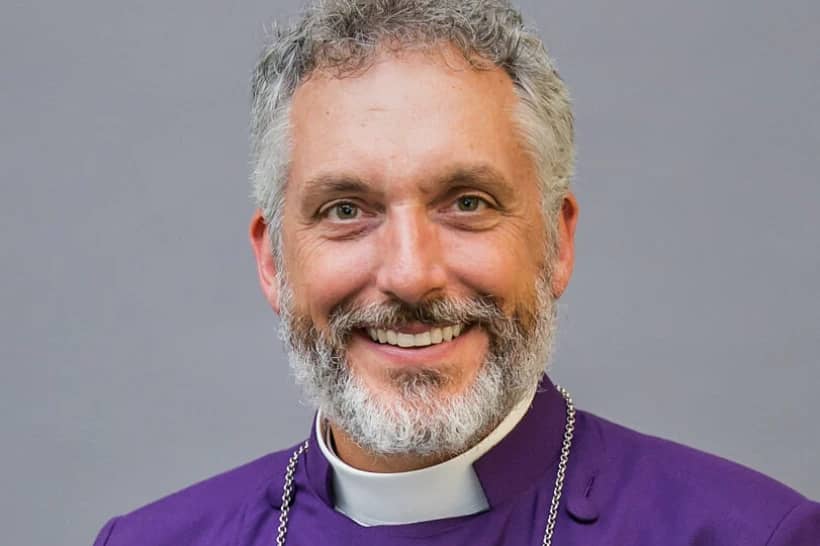ULAANBAATAR – While Pope Francis is in Mongolia this week, not only will the geopolitical undertones of the visit be on full display, but so will his affinity for the global and ecclesial peripheries, as he meets one of the Catholic Church’s smallest flocks.
Speaking during his Aug. 27 Sunday Angelus address, Francis called his trip to Mongolia “a much-desired visit” and an opportunity “to embrace a Church that is small in numbers, but lively in faith and in great charity.”
He called Mongolians a “noble and wise people, with a great religious tradition I will have the honor of knowing,” and said he is coming “as a brother to all.”
Francis is traveling to Ulaanbaatar, the capital of Mongolia, from Aug. 31-Sept. 4, marking his 43rd international trip and the 61st country he has visited in his decade-long papacy.
After spending his first full day recovering from the roughly 11-hour flight from Rome to Ulaanbaatar, the pope will kick off his activities Saturday by meeting local civil authorities as well as the country’s missionaries and clergy. He will also preside over an interreligious event, celebrate Mass, and inaugurate a new charitable center before returning to Rome Monday morning.
With Mongolia being neighbored by Russia to the north and China to the south, this will be the closest Pope Francis has been to either country, and there will be a clear geopolitical agenda at play, particularly in his first speech to national authorities in Mongolia.
Yet apart from the politics involved, there is also a strong and clear pastoral element to the visit, as Francis steps into a relatively new church unknown to most locals.
A preference for the peripheries
In visiting Mongolia, Pope Francis is also traveling to a country where Catholics are a small minority, numbering less than 1,500 in a country that is roughly 53 percent Buddhist, with most adhering to Tibetan Buddhism.
After nearly 70 years of Communist rule spanning the bulk of the 20th century, Mongolia is rebuilding its religious identity and embracing new religious traditions, including Catholicism, with the first modern missionaries arriving in 1992, after the fall of the Soviet regime.
In this sense, Catholic layman Yumchin Batkhuu, in a video series produced for Fides News, a missionary news site attached to the Vatican’s Dicastery for Evangelization, said the papal visit is an opportunity to teach Mongolia about the Catholic Church.
“As a Buddhist and nomadic country, Christianity is not familiar to Mongolians and many of us, most of us, don’t know what Christianity is, and especially what the Catholic Church is,” he said, adding, “it is actually very good that the pope is visiting Mongolia so that people can know and learn about Christian culture.”
Cardinal Giorgio Marengo, apostolic prefect of Ulaanbaatar, spoke in the video series about the budding interfaith community in Mongolia and the attempts of various religious leaders to forge friendly relations.
At the beginning, when Catholic missionaries first returned to Mongolia, interreligious dialogue “was one of the fields in which there was a greater commitment, because Mongolia as a country has a long tradition of spirituality, whether its Shamanism, Buddhism, and also an Islamic part,” Marengo said.
The Church’s youngest cardinal, Marengo is 49 and received his red hat from Pope Francis last year in yet another sign of his preference for the peripheries. Marengo for years has also collaborated with the Vatican’s Dicastery for Interreligious Dialogue.
In Mongolia, “interreligious dialogue is a reality that becomes concrete in a praxis of regular meetings, and they are increasingly such in recent years,” he said, saying that what was once one or two meetings a year among various religious leaders in the past two years have become bimonthly encounters, with each religious leader taking turns hosting the others.
During these conversations, “themes of common interest are deepened in, and also difficulties and possible common solutions, initiatives above all in the charitable field that can bring us together,” Marengo said.
Marengo said the leaders who participate undergo information courses on the respective religions in order to facilitate a better understanding.
“The various religious traditions are not a threat in their diversity, but if they are able to harmonize well among themselves, they are a resource for every society, for the state,” Marengo said, saying, “We are confident that this greatly favors an understanding of the religious traditions as a resource and not as a difficulty, as a richness that puts dialogue into circulation among us.”
These interfaith ties will be on full display during the ecumenical and interfaith encounter the pope will preside over on Sunday, and which will be attended by representatives of the Islamic, Jewish, Buddhist, Mormon, Shamanist, Evangelical, Hindu and Sinto communities, among others.
That afternoon Pope Francis will celebrate Mass in what is usually a multi-purpose indoor stadium and arena, with some 2,500 people expected to attend, including Mongolia’s 1,450 Catholic population along with pilgrim groups from surrounding countries.
According to Vatican spokesman Matteo Bruni, groups of Catholics from Russia, China, Hong Kong, Macau, Thailand, Azerbaijan, Kyrgyzstan, and other nearby countries will participate, meaning both geopolitical and pastoral elements will be at play, especially in regard to groups from China and Russia.
In addition to interfaith efforts, the Church in Mongolia, as in many other places, is known for its social projects.
Missionaries from Belgium, the Congo, South Korea, the Philippines, Italy and elsewhere run these activities, leading agricultural programs aimed at introducing greenhouses in private homes to curb poverty and malnutrition, as well as kindergartens and support programs for women facing domestic violence and their children.
The Church also assists migrants and helps funnel funds from foreign aid to various local initiatives, with most beneficiaries being non-Catholic, while also promoting both anti-discrimination and anti-corruption efforts.
Caritas International, the Church’s global charitable organization, has also had a footprint in Mongolia since 2000, assisting herders in harsh weather, providing aid to the poor and promoting a just and sustainable development.
Through seven different programs, Caritas Mongolia assists in programs dealing with education, social and humanitarian aid, food security and agriculture, migration, rebuilding livelihoods for those struggling, and community-building projects in rural areas, as well as reducing the fallout from natural disasters.
Yet despite their efforts, and despite the generally good relations between Church and state, there has been some trouble over visas, with missionaries, no matter how long they’ve been in Mongolia, often receiving only short-term visas, meaning they are forced to travel abroad every three months without having the certainty of whether they will be allowed back in.
According to a recent article published in The Diplomat, the Mongolia government also requests that for every missionary visa granted, Catholic entities pay certain fees and employ a number of local citizens.
In a comment to Crux, Salesian Father Jaroslav Vracovský, a missionary in Mongolia for several years, declined to speak about the visa situation, but said that “In general, we have a good relationship with the government, and we can enjoy religious freedom in this democratic country, but we must follow the rules valid for all.”
Vatican spokesman Matteo Bruni in press briefing Tuesday ahead of the pope’s Aug. 31 departure said the role of missionaries in Mongolia is important, and that “an agreement between the Holy See and Mongolia on their presence” is being negotiated, but he offered no details.
Marengo in his remarks said the Church in Mongolia “represents an experience of being Catholic in a condition of minority, at times of marginality.”
This experience, he said, “can perhaps offer the rest of the Church the gift of the freshness of a faith that questions itself, that allows itself to be questioned by reality, that doesn’t have great external forces or signs to rely on, but counts on the living presence of the risen Lord and on dialogue, on caring for the little ones.”
In this sense, he said, “the periphery, if we can call it that, also has something to say to the rest of the universal Church.”






